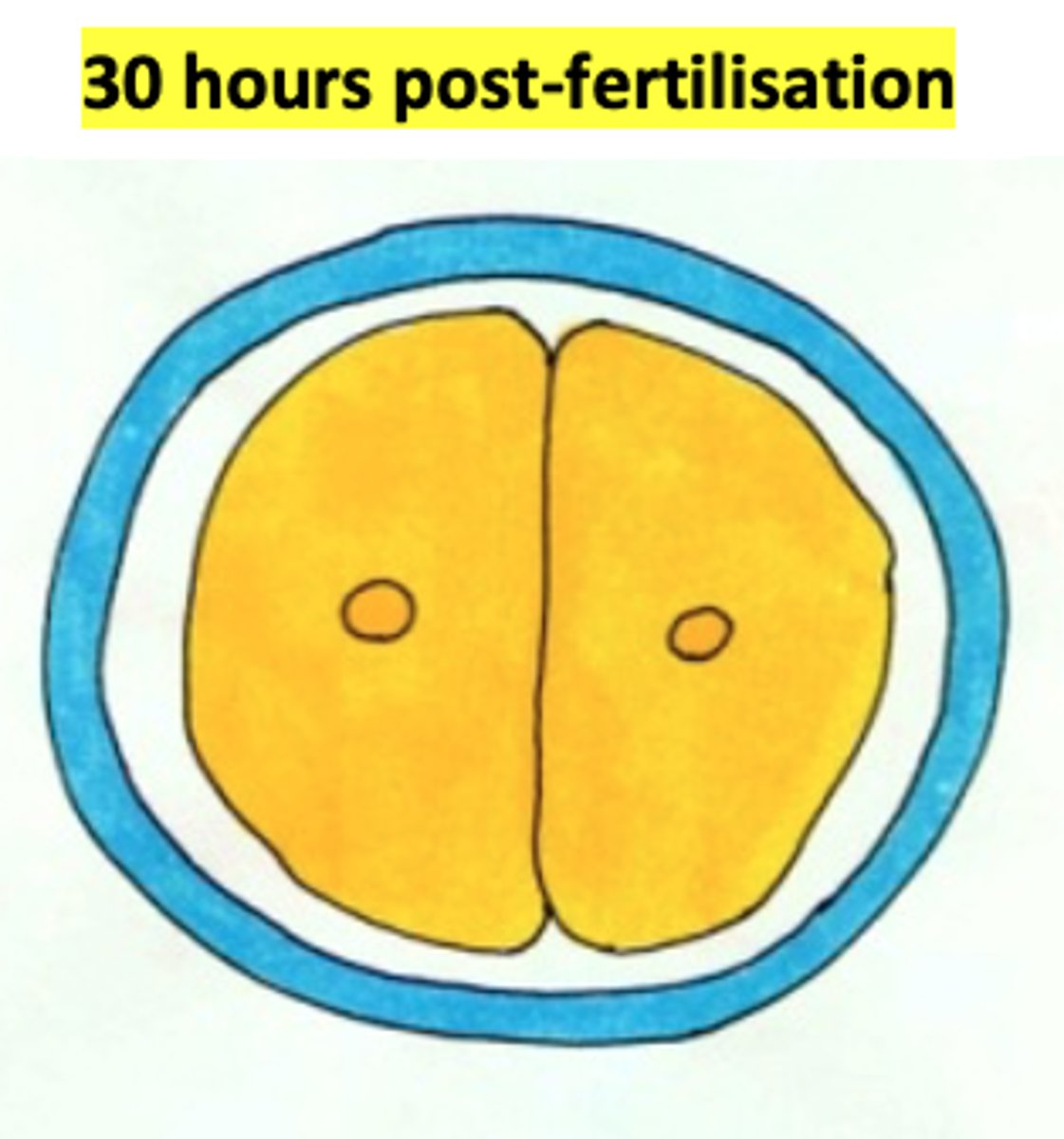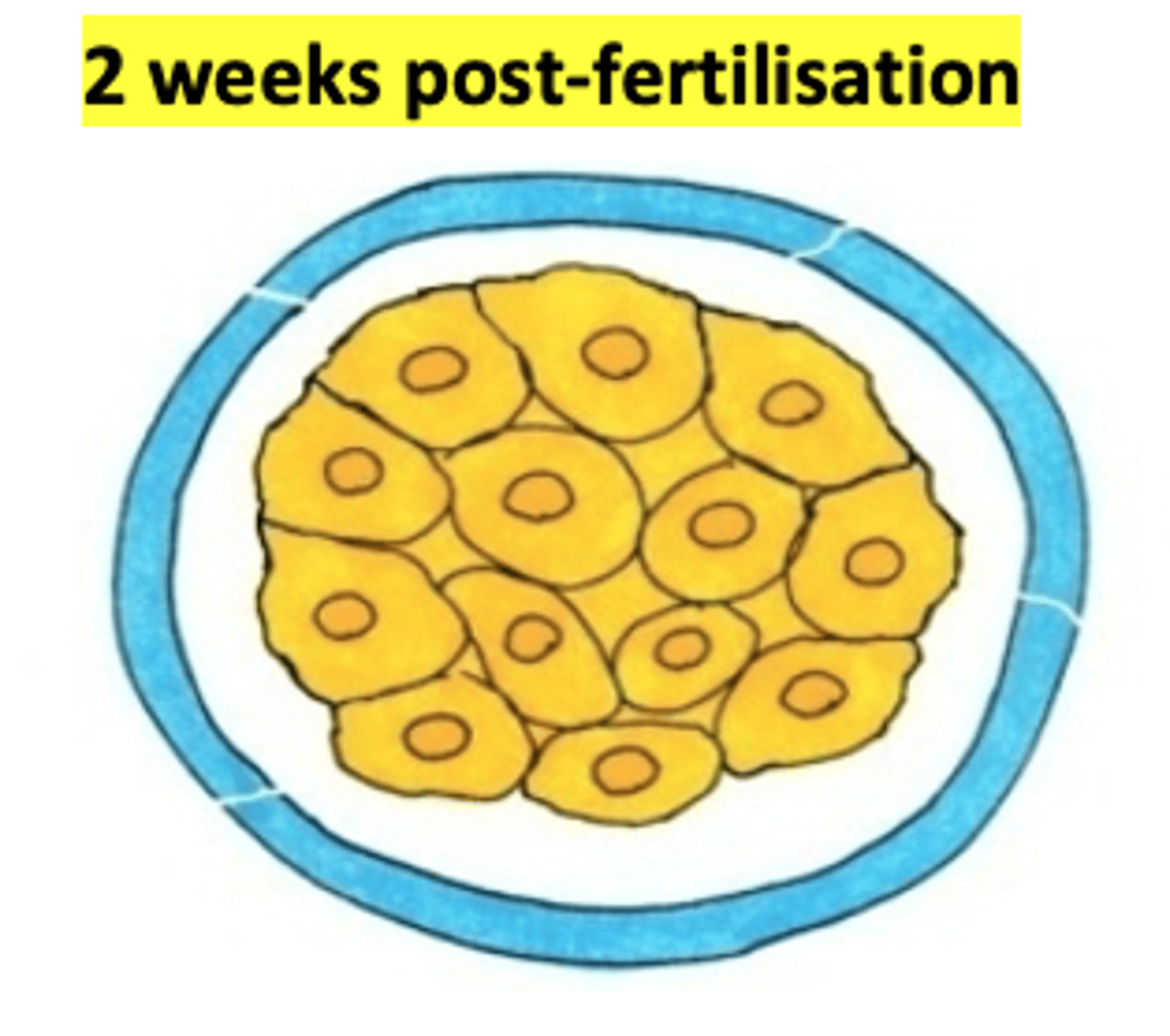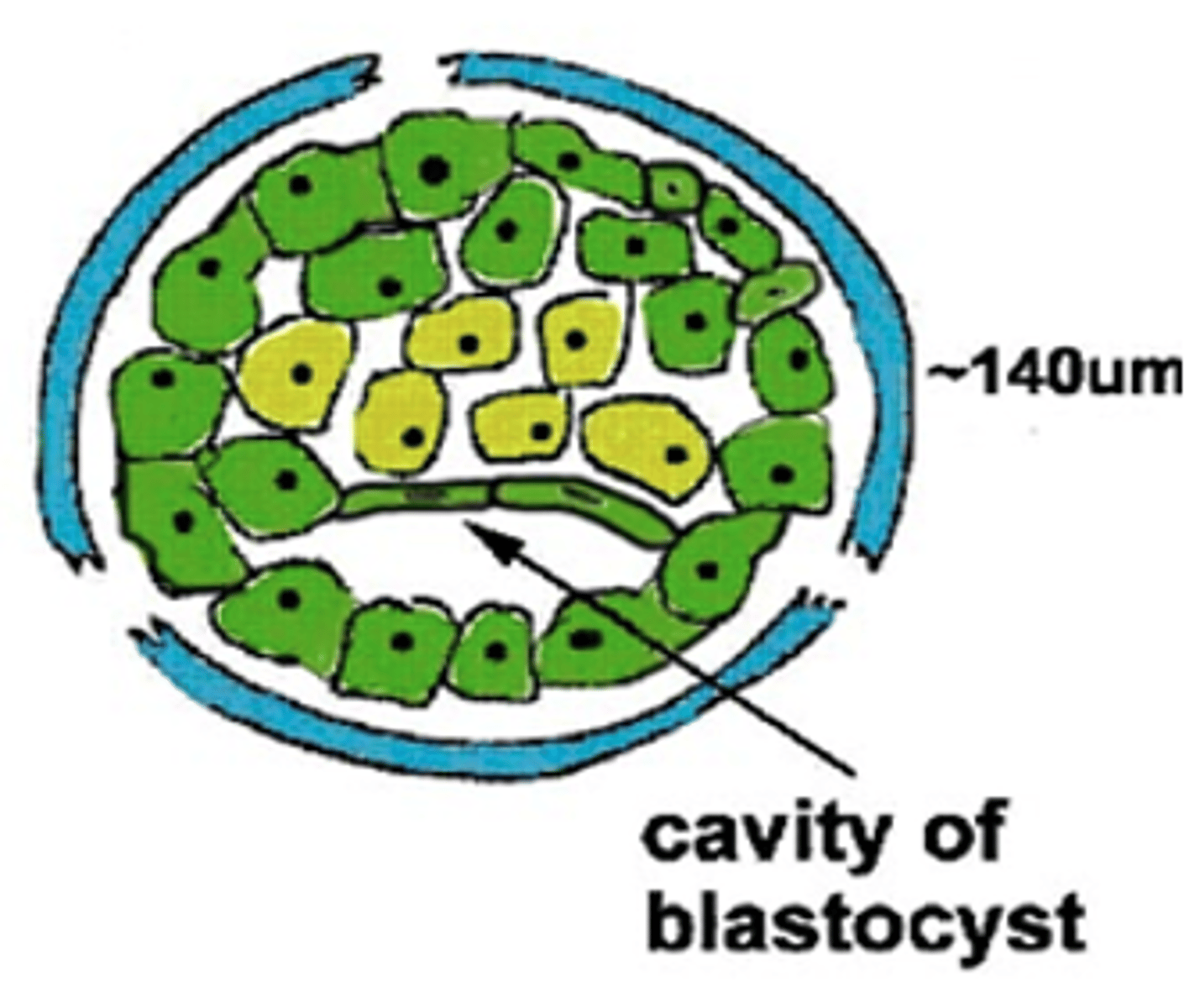Fertilisation and the Blastocyst EMB 1
1/15
There's no tags or description
Looks like no tags are added yet.
Name | Mastery | Learn | Test | Matching | Spaced |
|---|
No study sessions yet.
16 Terms
During Fertilisation Sperm goes thru 3 different stages. What are they ?
Penetration of corona radiata
Penetration of zona pellucida
Fusion of the oocyte and sperm cell membranes
Explain the timing for fertilisation.
mature ovum once ovulated is viable for only 24 hours while the mature sperms can stay alive for about 2-7 days So if an ovum is not fertilized within 24 hours once it has been ovulated there will be no fertilization or zygote formation
What happens initially during fertilisation?
Sperm enters vagina ↓
Sperm enters cervix ↓
Sperm travels to uterine tubes (30 min - 6 days, via muscular contractions and flagellar movement) ↓
Capacitation in uterine tube (~7 hours, removal of glycoprotein coat) ↓
Stage 1: Penetration of corona radiata ↓ Distributing of corona radiata cells via:
Hyaluronidase from sperm acrosome
Tubal mucosal enzymes
Sperm tail movements
What happens during stage 2 : pass through the zona pellucida
Sperm reaches zona pellucida
↓
Sperm binds to zona pellucida
↓
Acrosomal cap releases enzymes (acrosin and trypsin-like substances)
↓
Enzymes help sperm penetrate zona pellucida
↓
First sperm reaches close to oocyte membrane
↓
Two reactions occur:
Oocyte releases cortical granules → triggers Zona pellucida undergoes zona reaction
↓
Zona pellucida becomes impermeable to other sperm entering in
↓
Polyspermy (when more than one sperm fertilises the egg) prevention complete
What happens during the 3rd stage : Fusion of the oocyte and sperm cell membranes
Secondary oocyte completes meiosis 2
↓
the head and some part of tail enter the oocyte cytoplasm, so practically the sperm only comes with its chromosomes rest of the content like cytoplasm, mitochondria etc are mainly thought to be provided by the oocyte.
↓
sperm’s nuclear content becomes a male pronucleus
↓
oocyte chromosomes are arranged into a female pronucleus
↓
tail detaches and degenerates
↓
pronuclei will come in close contact and the chromosomes will be arranged on a mitotic spindle to prepare for a normal mitotic division.
Site of fertilisation
Ampulla of the uterine tube
3 main results of fertilisation ?
restore diploid number
sex of embryo is determined
cleavage starts → cell division that occurs in an embryo
Stage 1/5 blastocyst formation
Cleavage via mitosis forms 2 identical cells - blastomeres

Stage 2/5 blastocyst formation
Further cleavage causes cells and cytoplasm to become smaller, lots of DNA synthesis
Therefore, cytoplasmic : nuclear ratio falls
Zona pellucida still present

Stage 3/5 blastocyst formation
Further cleavage results in the formation of a morula, solid ball of cells
Zona pellucida still present

Stage 4/5 blastocyst formation
Morula undergoes compaction, establishment of tight junctions between outer layer of surface cells
Zona pellucida begins to break down

Stage 5/5 blastocyst formation
Blastocyst formation
Trophoblast (outer cell) push cells towards the middle - inner cells mass
Zona pellucida begins to hatch

What does the layer of cells inside the blastocyst form ?
INNER CELL MASS. → gives arise to tissue of embryo proper
What does the layer of cells outside the blastocyst form ?
Layer of outer cells are OUTER CELL MASS- forms trophoblast → form placenta
What is Cleavage ?
Rapid cell division after fertilisation when the embryo turns into a multicelled organism.
First clevage occurs 30 hrs after fertilisation
zygote → blastomeres
What is morulation?
Zygote will then undergo series of miotic divisions→ result in 4-cell then 8-cell then 16-cell (morula) and then 32-cell→this causes cell number to increase but with each division the blastomers are becoming smaller in size